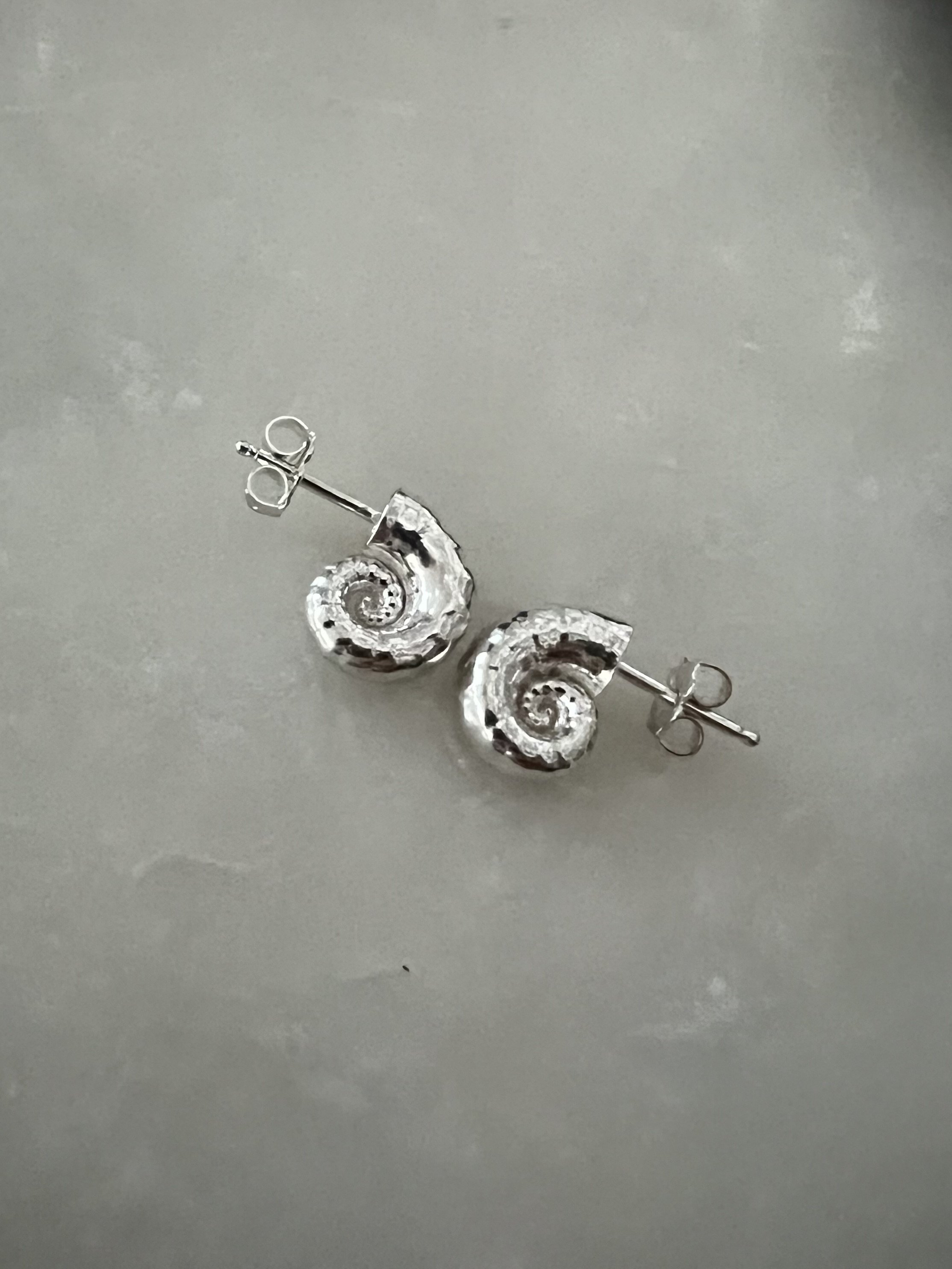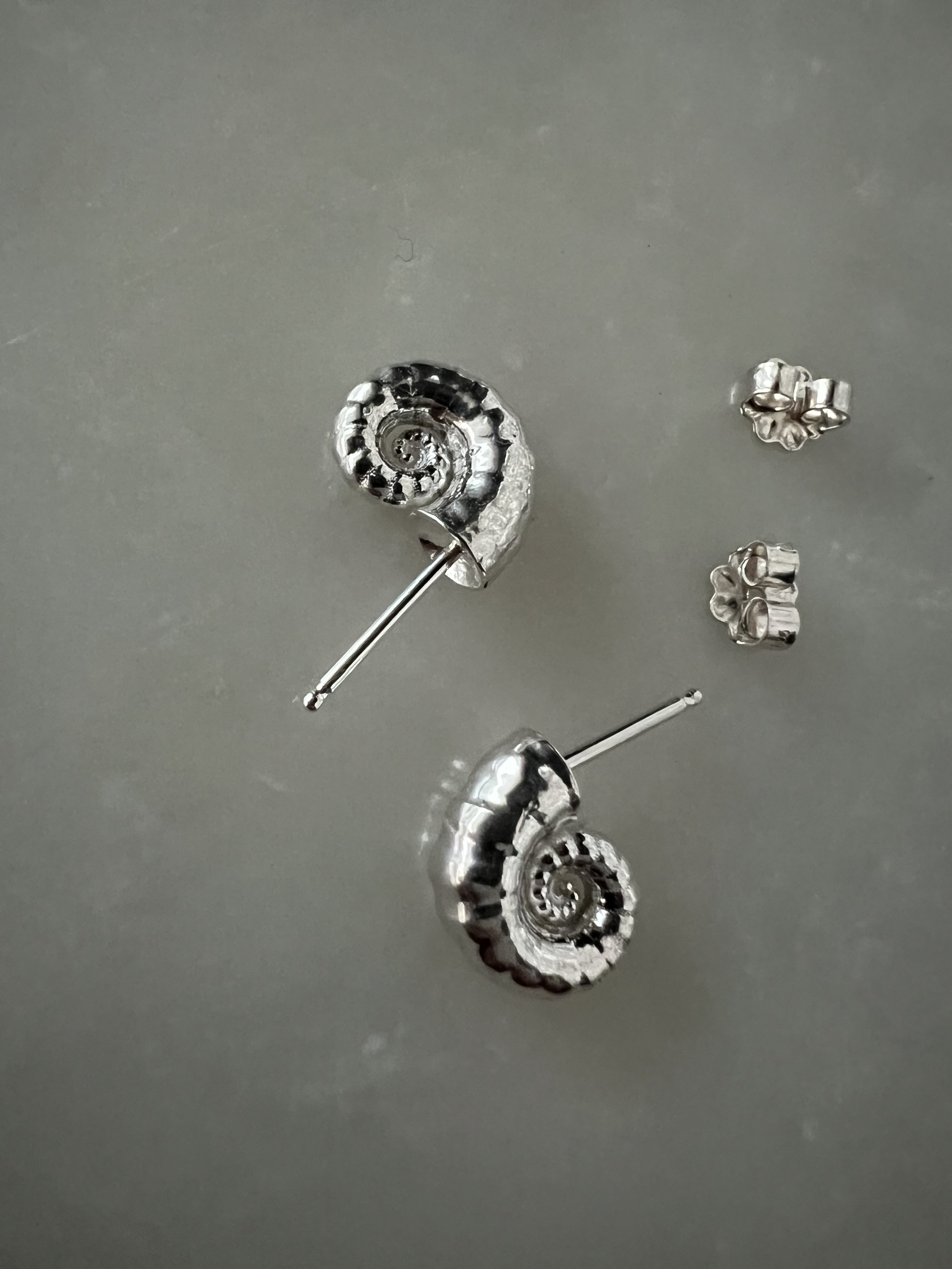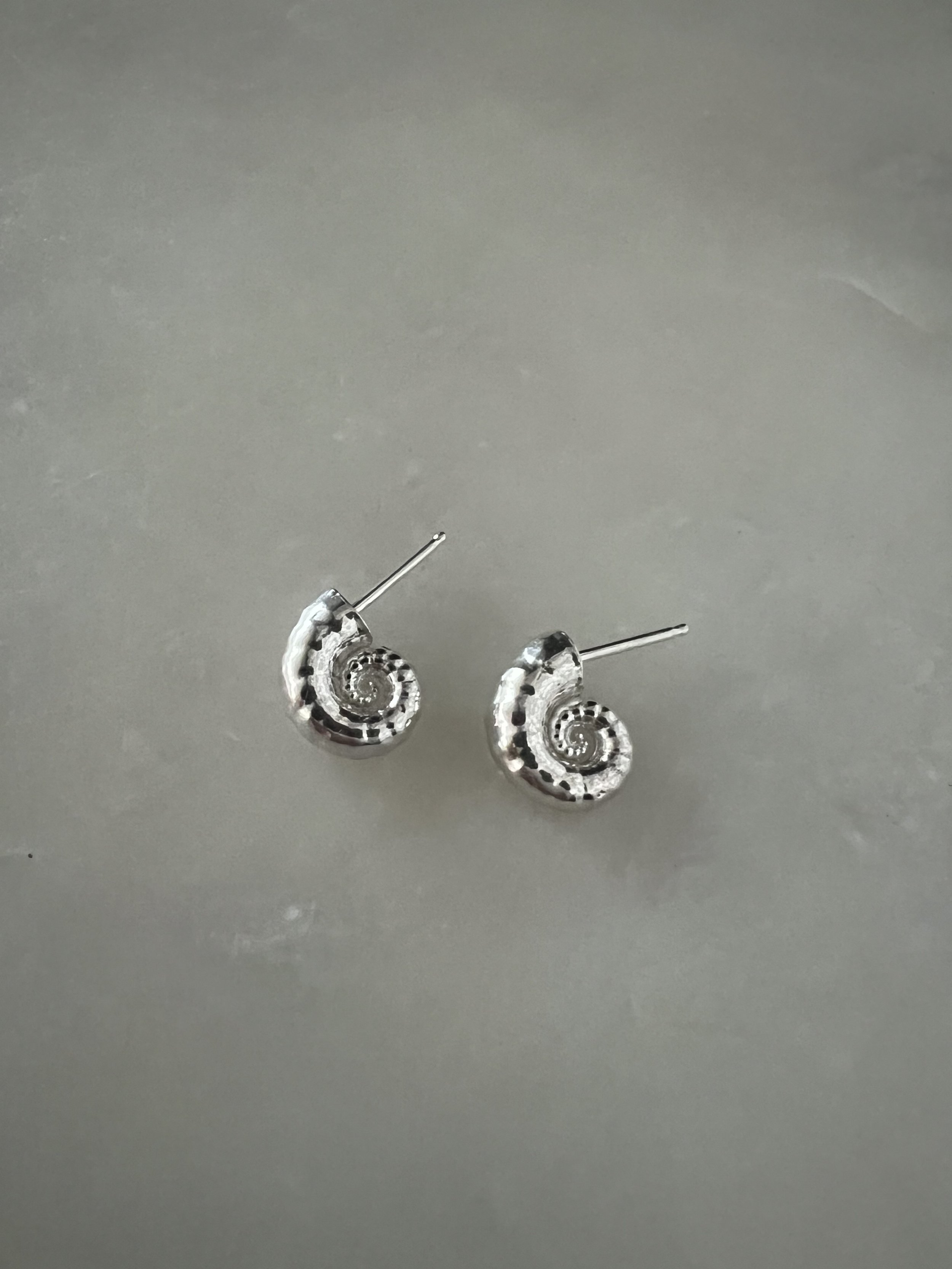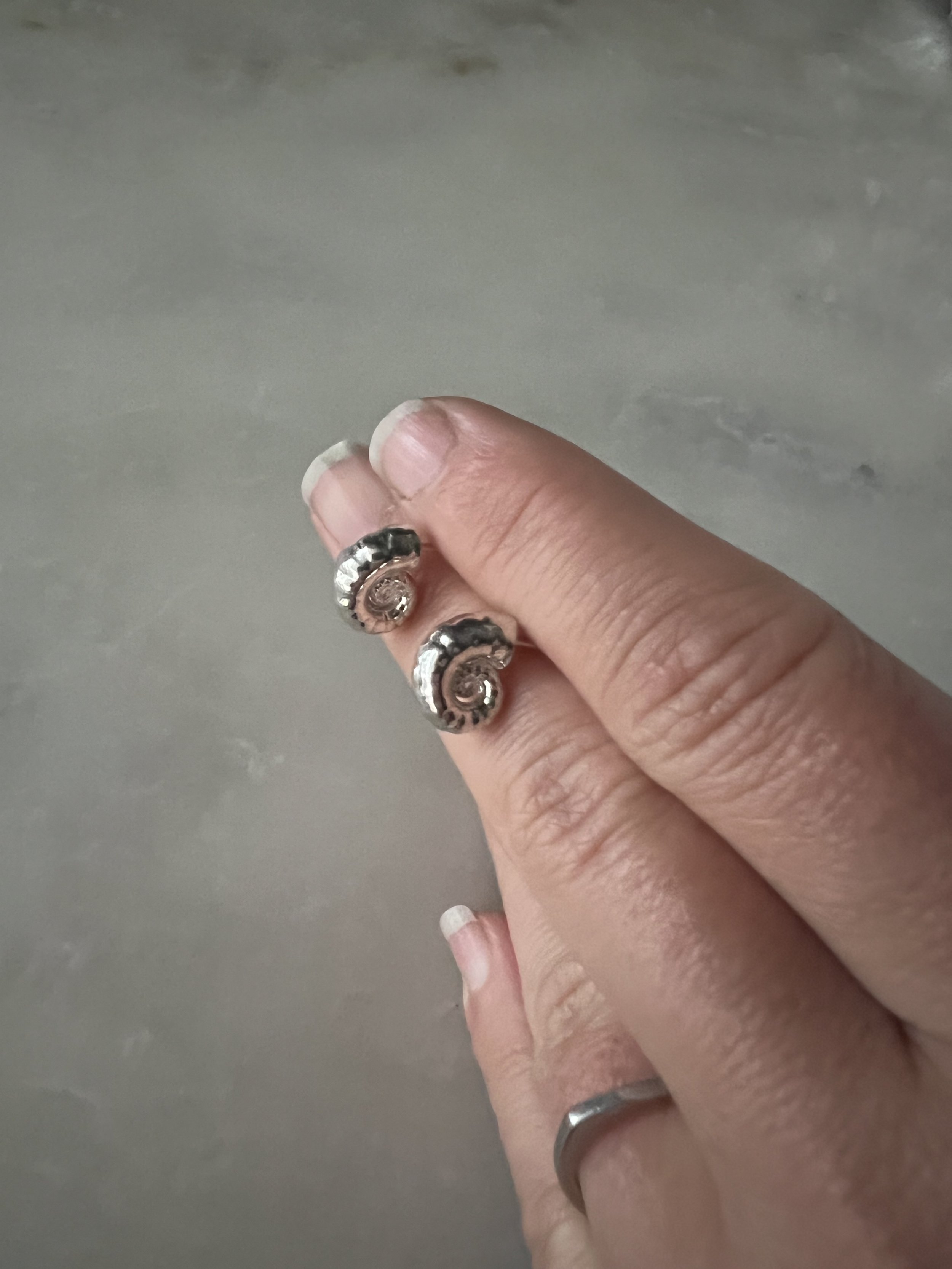 Image 1 of 7
Image 1 of 7

 Image 2 of 7
Image 2 of 7

 Image 3 of 7
Image 3 of 7

 Image 4 of 7
Image 4 of 7

 Image 5 of 7
Image 5 of 7

 Image 6 of 7
Image 6 of 7

 Image 7 of 7
Image 7 of 7








Squid Shell Studs 12mm
Molded and cast from a genuine ram’s horn squid shell in solid sterling silver, these sweet little studs have the most graceful shape. I love the negative space between the spiral. These measure 12mm in diameter.
“The ram’s horn squid, or Spirula spirula, is one of the most elusive cephalopods in the world. This tiny squid is only three inches long, lives in deep regions of the ocean, and until very recently had never been discovered in its natural habitat. What little marine biologists do know about the ram’s horn squid comes from studying the very few captured specimens in aquariums.
But for beachcombers, ram’s horn squid is most interesting for its delicate, coiled shell, which the squid itself is named after. The squid is also known as the little post horn squid, or—as it has a light-emitting organ on one end—the tail-light squid. The ram’s horn squid uses its tightly coiled shell as a buoyancy organ to travel up and down through the tropical and temperature regions of the deep ocean. While other mollusks such as the nautilus have external chambered shells, the cuttlefish and ram's horn squid are the only that use internal shells to regulate buoyancy. Due to its extreme buoyancy, ram’s horn squid shells wash up on beaches across the world for shell collectors to find. As a result, we know much more about the animal’s shell than anything else about this tiny squid.”
https://www.beachcombingmagazine.com/blogs/news/the-elusive-ram-s-horn-squid
Molded and cast from a genuine ram’s horn squid shell in solid sterling silver, these sweet little studs have the most graceful shape. I love the negative space between the spiral. These measure 12mm in diameter.
“The ram’s horn squid, or Spirula spirula, is one of the most elusive cephalopods in the world. This tiny squid is only three inches long, lives in deep regions of the ocean, and until very recently had never been discovered in its natural habitat. What little marine biologists do know about the ram’s horn squid comes from studying the very few captured specimens in aquariums.
But for beachcombers, ram’s horn squid is most interesting for its delicate, coiled shell, which the squid itself is named after. The squid is also known as the little post horn squid, or—as it has a light-emitting organ on one end—the tail-light squid. The ram’s horn squid uses its tightly coiled shell as a buoyancy organ to travel up and down through the tropical and temperature regions of the deep ocean. While other mollusks such as the nautilus have external chambered shells, the cuttlefish and ram's horn squid are the only that use internal shells to regulate buoyancy. Due to its extreme buoyancy, ram’s horn squid shells wash up on beaches across the world for shell collectors to find. As a result, we know much more about the animal’s shell than anything else about this tiny squid.”
https://www.beachcombingmagazine.com/blogs/news/the-elusive-ram-s-horn-squid
